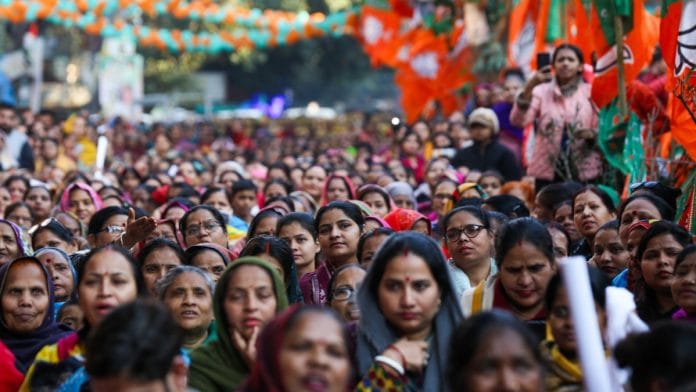Thank you dear subscribers, we are overwhelmed with your response.
When we look at successful Indians today, particularly those in their 40s and 50s, there’s an interesting pattern that often goes unnoticed: a significant number of them are children of government employees. This correlation isn’t merely coincidental but reflects a profound socioeconomic reality that characterized pre-1991 India, before the landmark economic reforms transformed the nation’s landscape.
The Unique Position of Government Employees
In pre-liberalization India, government service represented more than just employment—it was a gateway to stability in an otherwise uncertain economic environment. While private sector opportunities were limited and business ventures were fraught with risks, government employees enjoyed several distinct advantages:
First and foremost was the assurance of a steady monthly income. In a country where economic uncertainties were the norm, this regularity was invaluable. Government salaries, while modest, came with the guarantee of lifetime employment, regular increments, and pension benefits. This financial predictability allowed families to plan for the long term, particularly regarding their children’s education.
Beyond the salary, government employment provided additional benefits such as subsidized housing, healthcare, and educational facilities for children. These perks, though often overlooked in monetary calculations, significantly enhanced the quality of life and reduced the financial burden on families.
The Trifecta of Success
The children of government employees often benefited from what we might call the “trifecta of success”: economic stability, emotional security, and strong educational foundation. The assured income meant these families could focus on their children’s education without the constant stress of financial uncertainty. Unlike business families dealing with market fluctuations or agricultural families facing the vagaries of weather and crop prices, government employees’ children enjoyed uninterrupted academic pursuits.
This stability manifested in several ways. These children could afford better schools, private tuitions, and educational materials. More importantly, they could maintain consistency in their education—a crucial factor as Indian companies traditionally valued steady academic performance without gaps or fluctuations in marks.
The Impact on Educational Trajectories
The advantage becomes particularly evident when we examine educational trajectories. Children from government service backgrounds typically show more consistent academic records. This consistency wasn’t necessarily due to exceptional intelligence or ability, but rather the absence of disrupting factors that often plagued other families:
- No sudden financial crises forcing a change of schools
- No pressure to help in family business during peak seasons
- No interruptions due to family relocations (government quarters provided stable housing)
- Access to quality healthcare preventing long absences due to illness
Post-1991 Opportunities
When India opened its economy in 1991, these children were perfectly positioned to capitalize on the new opportunities, particularly in the IT sector. Their steady academic backgrounds made them attractive candidates for companies looking for reliable employees. Many secured positions in the emerging IT sector, while others pursued higher education abroad, often settling in the US or Europe.
The Myth of Pure Merit
This historical context challenges our understanding of merit and success in Indian society. While individual capability certainly plays a role, the head start provided by having parents in government service cannot be underestimated. Many successful professionals today benefited from this background, though it’s rarely acknowledged in their success stories.
Being average but consistent often proved more beneficial than being brilliant but irregular in academic performance. Companies valued stability over exceptional abilities, and the children of government employees naturally fit this requirement thanks to their stable backgrounds.
The Other Side of the Story
For children from non-government service backgrounds, the path to success was significantly more challenging. Business families faced the uncertainties of market fluctuations, farmers’ children dealt with the unpredictability of agricultural income, and those from private sector families lacked the job security that government service provided.
Any disruption—be it a business downturn, a failed crop, or a family emergency—could derail educational plans. These interruptions often resulted in irregular academic records, making it harder to secure opportunities in the post-liberalization era, despite potentially equal or superior capabilities.
Contemporary Implications
Understanding this historical advantage helps explain certain patterns in Indian society today. It sheds light on why certain families have maintained their middle-class status across generations and why some segments of society found it easier to transition into the post-liberalization economy.
This realization is crucial for several reasons. First, it helps us understand that success in India isn’t purely meritocratic but often built on the foundation of family stability, particularly during the pre-reform era. Second, it explains why certain sections of society found it easier to adapt to the new economic order post-1991.
Looking Forward
As India continues to evolve, the advantages of a government service background may be less pronounced than they once were. The private sector now offers comparable, if not better, opportunities. However, the legacy of this historical advantage continues to influence social mobility and success patterns in Indian society.
Understanding this context is crucial for developing more inclusive policies and opportunities for those who didn’t benefit from such stable backgrounds. It’s also a reminder that success stories often have complex historical and social underpinnings that go beyond individual merit or ability.
These pieces are being published as they have been received – they have not been edited/fact-checked by ThePrint


